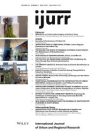The Japanese social structure was established and has been maintained through a mixed economy comprising a balance between the state, the market, the family and the company. Vital elements in maintaining this balance have been the traditional family, full employment and increasing prosperity. More recently, developments have seen a reversal of economic prosperity, rising unemployment, increasing pressure to restructure the employment system and a potential rise in the number of households experiencing housing difficulties. In addition, the predominance of the nuclear family, the increased employment of women and decreased fertility has put the enterprise, family and state dynamic under challenge. This article explores some of the implications of these trends as some of the certainties of the past are giving way to increasing insecurity and risk across a wider section of society. It begins by exploring the institutional and social structure of post‐war Japan, when there was little evidence of poverty and homelessness. It goes on to consider the recent rise in the number of people living on the streets of Japanese cities and the policies put in place. The article then outlines some of the processes of social change that have contributed to the growth in the numbers of homeless people in Japan. L
Details
Written by:
Patricia Kennett, Masami Iwata
Digital Object Identifier (DOI)
10.1111/1468-2427.00431
About DOI
Read full article as PDF
Read full article as HTML
See the references for this article
